#anne-marie mieville
Text

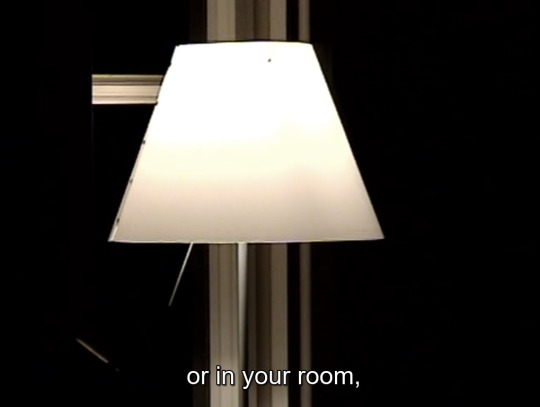


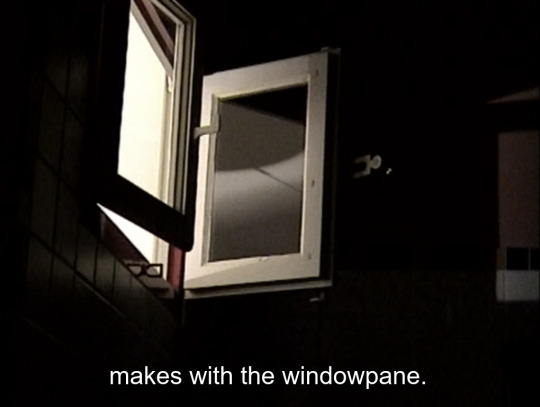
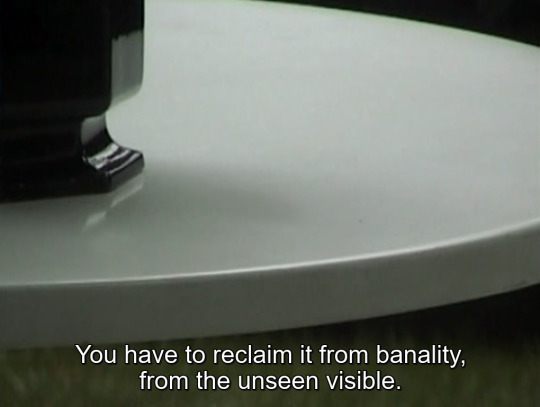





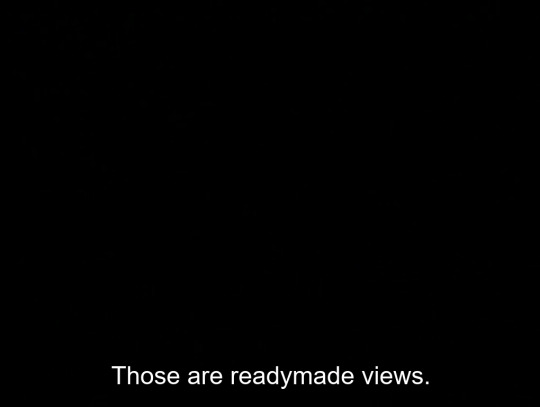

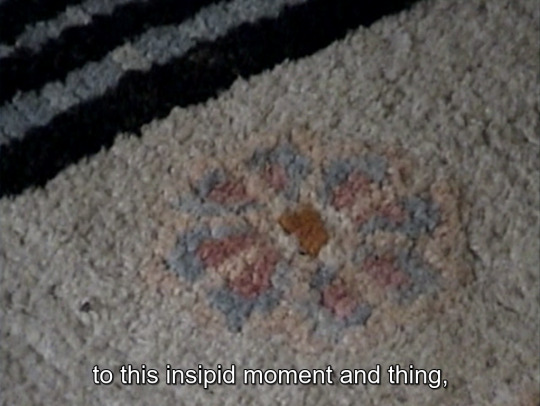

The Old Place, Anne-Marie Miéville / Jean-Luc Godard (1999)
3K notes
·
View notes
Text
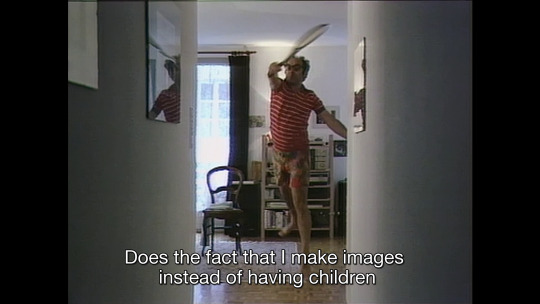

Jean-Luc Godard & Anne-Marie Miéville
- Soft and Hard
1986
#Jean Luc Godard#Anne Marie Miéville#Anne Marie Mieville#Soft and Hard#1986#experimental film#tennis#Jean-Luc Godard#Anne-Marie Miéville#Anne-Marie Mieville
193 notes
·
View notes
Text




Soft & Hard (Anne-Marie Miéville & Jean-Luc Godard, 1985)
4 notes
·
View notes
Text
Jean-Luc Godard's 'Détective' on MUBI and free on Kanopy
Jean-Luc Godard’s Détective (France, 1985) is a modernist twist on the pulp movie conventions and elements that inspired such early films as Breathless (1960) and Band of Outsiders (1964).
Set almost entirely with in the Hotel Concorde Saint-Lazare in Paris, the story involves a boxing manager (French rock legend Johnny Hallyday) in debt to the mob, a married couple (Claude Brasseur and Nathalie…
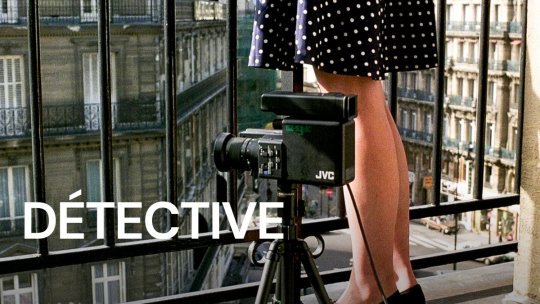
View On WordPress
#1985#Alain Sarde#Anne-Marie Mieville#Blu-ray#Claude Brasseur#Détective#Detective#DVD#Emmanuelle Seigner#France#Jean-Luc Godard#Jean-Pierre Léaud#Johnny Hallyday#Kanopy#Laurent Terzieff#MUBI#Nathalie Baye#Stéphane Ferrara#VOD
0 notes
Text

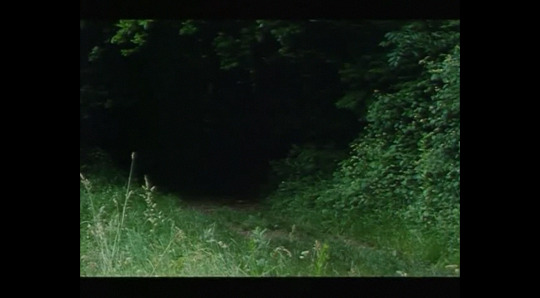
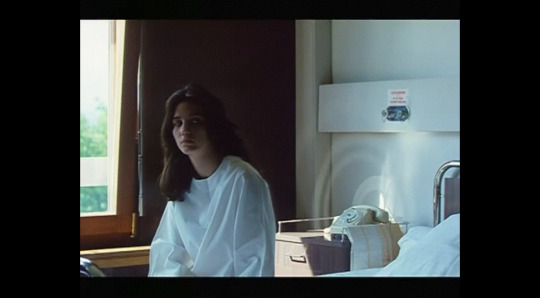

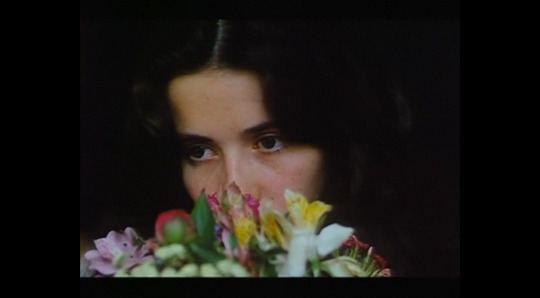

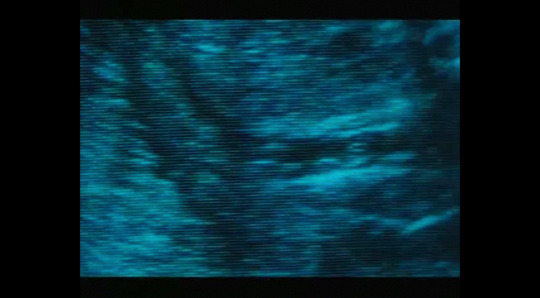
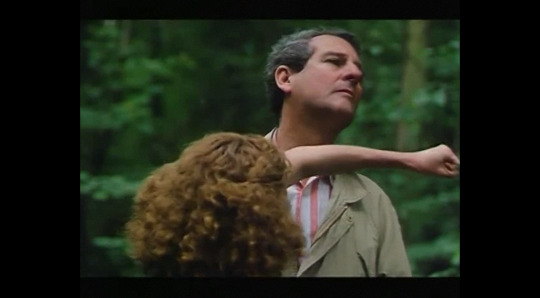
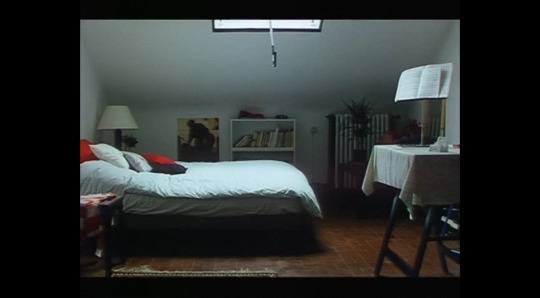

my dear subject (anne-marie miéville, 1988)
35 notes
·
View notes
Photo

Jean-Luc Godard, giant of the French New Wave, dies at 91
Jean-Luc Godard, the French-Swiss director who was a key figure in the Nouvelle Vague, the film-making movement that revolutionised cinema in the late 1950s and 60s, has died aged 91. French news agency AFP reported that he died “peacefully at home” in Switzerland with his wife Anne-Marie Mieville at his side. Liberation, quoting an unnamed family member, reported that Godard’s death was assisted, which is legal in Switzerland. “He was not sick, he was simply exhausted. So he had made the decision to end it. It was his decision and it was important for him that it be known.” Godard’s lawyer Patrick Jeanneret told AFP Godard’s death followed a medical report of “multiple disabling pathologies”.
Best known for his iconoclastic, seemingly improvised filming style, as well as unbending radicalism, Godard made his mark with a series of increasingly politicised films in the 1960s, before enjoying an unlikely career revival in recent years, with films such as Film Socialisme and Goodbye to Language as he experimented with digital technology.
The French president Emmanuel Macron tweeted: “We’ve lost a national treasure, the eye of a genius”. He said Godard was a “master” of cinema – “the most iconoclastic of the Nouvelle Vague”.
Film-makers who paid tribute included Last Night in Soho director Edgar Wright, who called him “one of the most influential, iconoclastic film-makers of them all”.
Born in Paris in 1930, Godard grew up and went to school in Nyon, on the banks of Lake Geneva in Switzerland. After moving back to Paris after finishing school in 1949, Godard found a natural habitat in the intellectual “cine-clubs” that flourished in the French capital after the war, and proved the crucible of the French New Wave. Having met the likes of critic André Bazin and future fellow directors François Truffaut, Claude Chabrol and Jacques Rivette, Godard began writing for the new film magazines, including Bazin’s soon-to-be-influential Cahiers du Cinema. Godard struck a maverick note from the start, defending traditional Hollywood film-making and promoting the likes of Howard Hawks and Otto Preminger over more fashionable figures. Godard also had a reverence for Humphrey Bogart, something that would come out in his first feature, Breathless, which he released in 1960.
Before that, however, Godard eased his way into film-making via a series of short films, such as Charlotte and Véronique, or All the Boys Are Named Patrick in 1957, which prefigured his loose, apparently slipshod film-making style. An earlier idea of Truffaut’s, about a petty criminal and his girlfriend, had been abandoned, but Godard thought he could turn it into a feature, and asked for permission to use it. Truffaut, meanwhile, had scored a major success with his own feature, The 400 Blows, and his clout helped Godard get his project off the ground. Shot on the Paris streets in 1959, with negligible use of artificial lighting, and a script written day-to-day, Breathless turned into a bona fide cultural phenomenon on its release, making a star of Jean-Paul Belmondo and winning Godard best director at the Berlin film festival.
Godard went on to make a string of seminal films in the 1960s at a furious rate. His next film, Le Petit Soldat, suggested the French government condoned torture, and it was banned until 1963, but it was also the film on which Godard met his future wife, Anna Karina, as well as coining his most famous aphorism, “Cinema is truth at 24 frames a second.” Other highlights included A Woman Is a Woman, a self-referential homage to the Hollywood musical, which again starred Karina, along with Belmondo and won more Berlin awards; the extravagant, epic film-about-film-making Contempt, with Michel Piccoli, Brigitte Bardot, Jack Palance and Fritz Lang; and Alphaville, a bizarre hybrid of film noir and science fiction.
By 1965 Godard’s marriage with Karina had ended in divorce; their last feature together was Made in USA, a homage to American pulp fiction that ran into copyright trouble in the US. By this time Godard was also thoroughly identified with the revolutionary politics of the age, and his film-making reflected this: he set up a film-making collective named after Dziga Vertov, the Soviet director of Man with a Movie Camera, helped to shut down the Cannes film festival in 1968 in sympathy with the student riots in Paris, and collaborated with young Marxist student Jean-Pierre Gorin on Tout Va Bien, a study of a strike in a sausage factory featuring Jane Fonda.
Godard also met, in 1970, film-maker Anne-Marie Miéville who would become a regular collaborator, and later partner after the breakdown of his second marriage, to Anne Wiazemsky, who had starred in Godard’s 1967 study of student radicals, La Chinoise.
As the 70s moved on, Godard’s strident political and intellectual stances began to lose their cachet, and his work reduced in impact in the 1980s – though, improbably, his 1987 film of King Lear, reconfigured as a post-apocalyptic farce featuring a gangster called Learo, was financed by action specialists Cannon Films.
His 2001 feature In Praise of Love marked a comeback, being selected for the Cannes film festival, while the release of Film Socialisme in 2010 preceded the award in 2010 of an honorary Oscar (the citation read: “For passion. For confrontation. For a new kind of cinema”). Typically, Godard failed to collect it in person. His 2014 film Goodbye to Language saw him pick up a major film-making award, the jury prize at Cannes, and Image Book, which was selected for the 2018 Cannes film festival, was given a one-off “special Palme d’Or”.
Daily inspiration. Discover more photos at http://justforbooks.tumblr.com
25 notes
·
View notes
Video
youtube
Nous sommes tous encore ici, Anne-Marie Mieville (1996)
Texte : La nature du totalitarisme, Hannah Arendt
7 notes
·
View notes
Photo
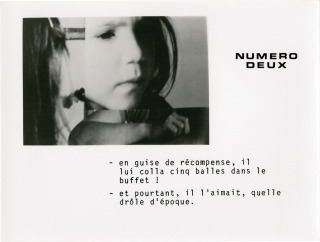
Numero deux [Number Two]
Jean-Luc Godard (director, starring)
William Lubtchansky (photographer)
Anne-Marie Mieville (screenwriter)
Sandrine Battistella (starring)
Paris: Anne-age-Bela, 1975. Collection of ten vintage borderless photographs (five black-and-white and five in color) from the 1975 film.
Generally considered the peak of the collaborative work on video done by Godard and Mieville, presenting scenes from the everyday interactions of a working class family, with a special focus on children. The film was shot on video, then played back on monitors and filmed in 35mm. In the final edit, many of the 35mm shots are shown in split screen.
8 x 10 inches. Fine. $925.00
(via Numero deux Number Two | Jean-Luc Godard, William Lubtchansky, Anne-Marie Mieville, Sandrine Battistella)
MERCI à @krisis-krinein / krisis-krinein.tumblr.com
5 notes
·
View notes
Text
Godard Street View
a poetic film made on google street view where godard was captured once outside his swiss studio with anne marie mieville. rip
0 notes
Text
Bollywood celebs extend condolences on demise of French film director Jean-Luc Godard
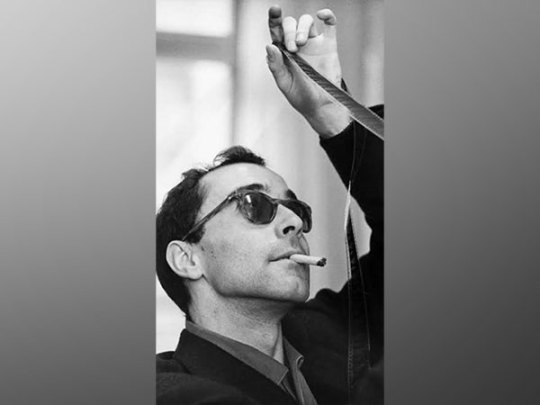
Sep 14, 2022 13:53 IST
New Delhi , September 14 (AF): French-Swiss film director Jean-Luc Godard, the godfather of France's New Wave cinema, passed away at the age of 91, on Tuesday. Bollywood celebs including Farhan Akhtar and Ranveer Singh extended their condolences on social media.
Filmmaker-actor Farhan Akhtar took to his Instagram stories and dropped a black and white picture of Jean-Luc Godard along with a caption.

He wrote, "A giant of world cinema left us today, RIP Jean-Luc Godard."
In the picture, the director was seen dressed in a suit. He was seen wearing pair of shades and a cigar in his mouth.
Actor Ranveer Singh also shared a picture.

News of his death was confirmed by French media on Tuesday morning.
According to Fox News, Godard is regarded as a pivotal figure in the French New Wave movement. The movement, which differed from previous film styles, emphasised realism in storytelling while incorporating experimentation with editing techniques.
Godard's debut film, 'A bout de souffle (Breathless)' established him as one of the world's most vital and provocative directors, both in Europe and beyond.
Jean-Paul Belmondo rose to fame thanks to his films. When Pope John Paul II condemned Godard's controversial modern nativity play "Hail Mary" in 1985, it made headlines.
In 1963, Godard collaborated with iconic French actress Brigitte Bardot on the film Le Mepris (Contempt).
According to Variety, Godard's most ambitious project was his multipart video project "Histoire(s) du Cinema" (1988-1998), an iconoclastic and highly personal examination of the concept of cinema and its relationship to the twentieth century. His most recent films, "In Praise of Love" (2001) and "Notre musique" (2004), were critically acclaimed at the Cannes Film Festival. When his "Film Socialisme" screened in Un Certain Regard at Cannes in 2010, it elicited a more amused reaction; the highly experimental work ended with a title card reading "No Comment," a statement reflected in Godard's conspicuous absence from the festival.
Godard, however, experienced a significant career resurgence at Cannes in 2014 with "Goodbye to Language," in which he experimented with the 3D format while providing "a characteristically vigorous, playful, mordant commentary on everything from the state of movies to the state of the world," as described by Variety's Scott Foundas. It won the festival's jury prize (shared with Xavier Dolan's "Mommy") and later won the award for best film of the Godard and his partner, Swiss director Anne-Marie Mieville, collaborated closely for at least the last 30 years of his life.
Godard married Anna Karina, an actor who appeared in several of his films, in 1961. He married Anne Wiazemensky in 1965, following the divorce of the couple.
Numerous filmmakers, including Martin Scorsese, Steven Soderbergh, and Quentin Tarantino, were influenced by the legendary director. (AF)
Read the full article
0 notes
Text

Here and Elsewhere, Anne-Marie Miéville / Jean-Luc Godard / Jean-Pierre Gorin (1976)
729 notes
·
View notes
Photo
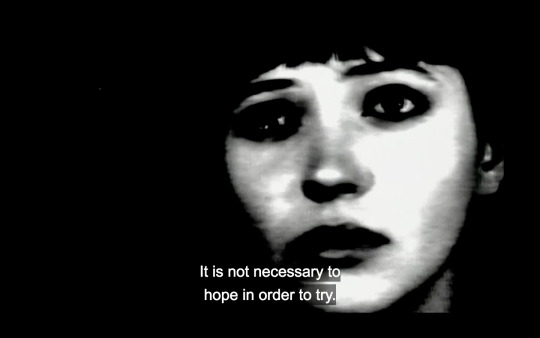

Jean-Luc Godard / Anne-Marie Miéville
- Sang Titre
2019
#jean luc godard#anne marie mieville#anne marie miéville#sang titre#2019#In Darkness of Time#vivre sa vie#anna karina#dans le noir du temps#film
449 notes
·
View notes
Text
Jean-Luc Godard, giant of the French New Wave, dies at 91
The radical director of Breathless and Alphaville, and who was a key figure in the French Nouvelle Vague, has died.

Jean-Luc Godard. Photograph: Gaetan Bally/AP
Jean-Luc Godard, the French-Swiss director who was a key figure in the Nouvelle Vague, the film-making movement that revolutionised cinema in the late 1950s and 60s, has died aged 91. French news agency AFP reported that he died “peacefully at home” in Switzerland with his wife Anne-Marie Mieville at his side. Liberation, quoting an unnamed family member, reported that Godard’s death was assisted, which is legal in Switzerland. “He was not sick, he was simply exhausted. So he had made the decision to end it. It was his decision and it was important for him that it be known.” Godard’s lawyer Patrick Jeanneret told AFP Godard’s death followed “multiple disabling pathologies”.
Best known for his iconoclastic, seemingly improvised filming style, as well as unbending radicalism, Godard made his mark with a series of increasingly politicised films in the 1960s, before enjoying an unlikely career revival in recent years, with films such as Film Socialisme and Goodbye to Language as he experimented with digital technology.
The French president Emmanuel Macron tweeted: “We’ve lost a national treasure, the eye of a genius”. He said Godard was a “master” of cinema – “the most iconoclastic of the Nouvelle Vague”.
Film-makers who paid tribute included Last Night in Soho director Edgar Wright, who called him “one of the most influential, iconoclastic film-makers of them all”.
Born in Paris in 1930, Godard grew up and went to school in Nyon, on the banks of Lake Geneva in Switzerland. After moving back to Paris after finishing school in 1949, Godard found a natural habitat in the intellectual “cine-clubs” that flourished in the French capital after the war, and proved the crucible of the French New Wave. Having met the likes of critic André Bazin and future fellow directors François Truffaut, Claude Chabrol and Jacques Rivette, Godard began writing for the new film magazines, including Bazin’s soon-to-be-influential Cahiers du Cinema. Godard struck a maverick note from the start, defending traditional Hollywood film-making and promoting the likes of Howard Hawks and Otto Preminger over more fashionable figures. Godard also had a reverence for Humphrey Bogart, something that would come out in his first feature, Breathless, which he released in 1960.
Before that, however, Godard eased his way into film-making via a series of short films, such as Charlotte and Véronique, or All the Boys Are Named Patrick in 1957, which prefigured his loose, apparently slipshod film-making style. An earlier idea of Truffaut’s, about a petty criminal and his girlfriend, had been abandoned, but Godard thought he could turn it into a feature, and asked for permission to use it. Truffaut, meanwhile, had scored a major success with his own feature, The 400 Blows, and his clout helped Godard get his project off the ground. Shot on the Paris streets in 1959, with negligible use of artificial lighting, and a script written day-to-day, Breathless turned into a bona fide cultural phenomenon on its release, making a star of Jean-Paul Belmondo and winning Godard best director at the Berlin film festival.
A look back at Jean-Luc Godard's most famous films – video
Godard went on to make a string of seminal films in the 1960s at a furious rate. His next film, Le Petit Soldat, suggested the French government condoned torture, and it was banned until 1963, but it was also the film on which Godard met his future wife, Anna Karina, as well as coining his most famous aphorism, “Cinema is truth at 24 frames a second.” Other highlights included A Woman Is a Woman, a self-referential homage to the Hollywood musical, which again starred Karina, along with Belmondo and won more Berlin awards; the extravagant, epic film-about-film-making Contempt, with Michel Piccoli, Brigitte Bardot, Jack Palance and Fritz Lang; and Alphaville, a bizarre hybrid of film noir and science fiction.
By 1965 Godard’s marriage with Karina had ended in divorce; their last feature together was Made in USA, a homage to American pulp fiction that ran into copyright trouble in the US. By this time Godard was also thoroughly identified with the revolutionary politics of the age, and his film-making reflected this: he set up a film-making collective named after Dziga Vertov, the Soviet director of Man with a Movie Camera, helped to shut down the Cannes film festival in 1968 in sympathy with the student riots in Paris, and collaborated with young Marxist student Jean-Pierre Gorin on Tout Va Bien, a study of a strike in a sausage factory featuring Jane Fonda.
Godard also met, in 1970, film-maker Anne-Marie Miéville who would become a regular collaborator, and later partner after the breakdown of his second marriage, to Anne Wiazemsky, who had starred in Godard’s 1967 study of student radicals, La Chinoise.
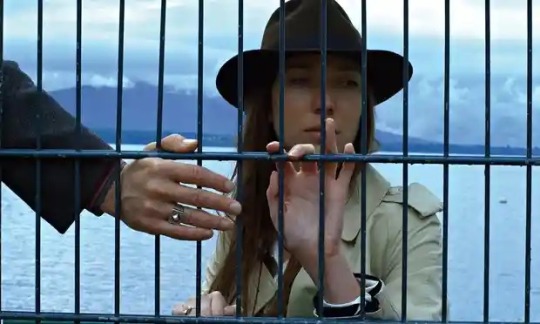
Goodbye to Language. Photograph: StudioCanal
As the 70s moved on, Godard’s strident political and intellectual stances began to lose their cachet, and his work reduced in impact in the 1980s – though, improbably, his 1987 film of King Lear, reconfigured as a post-apocalyptic farce featuring a gangster called Learo, was financed by action specialists Cannon Films.
His 2001 feature In Praise of Love marked a comeback, being selected for the Cannes film festival, while the release of Film Socialisme in 2010 preceded the award in 2010 of an honorary Oscar (the citation read: “For passion. For confrontation. For a new kind of cinema”). Typically, Godard failed to collect it in person. His 2014 film Goodbye to Language saw him pick up a major film-making award, the jury prize at Cannes, and Image Book, which was selected for the 2018 Cannes film festival, was given a one-off “special Palme d’Or”.
0 notes
Text
Iconic French New Wave Director Jean-Luc Godard Dead at 91 : Inside US
Iconic French New Wave Director Jean-Luc Godard Dead at 91 : Inside US
By JAMEY KEATEN and THOMAS ADAMSON, Associated Press
GENEVA (AP) — Jean-Luc Godard, the ingenious “enfant terrible” of the French New Wave who revolutionized popular cinema in 1960 with his first big endeavor, “Breathless,” and stood for years as one of the world’s most vital and provocative directors, has died. He was 91.
Swiss news agency ATS quoted Godard’s partner, Anne-Marie Mieville, and…

View On WordPress
0 notes
Photo
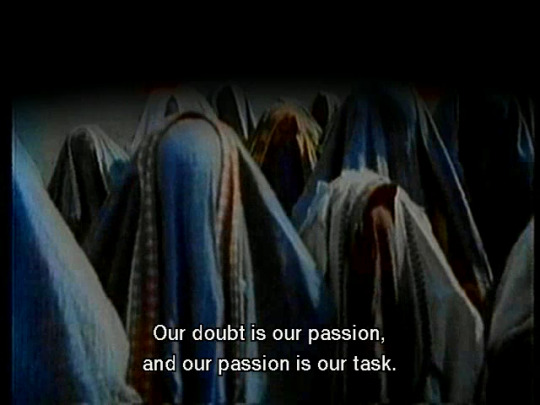
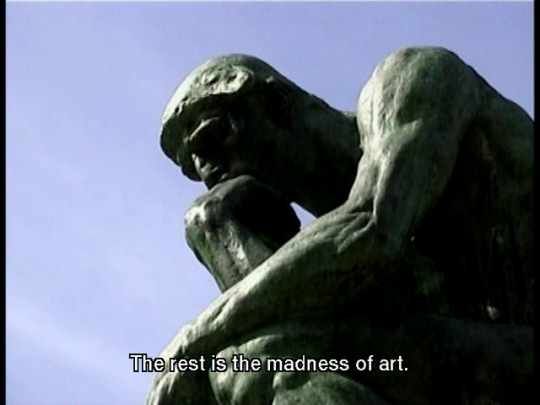
“The Old Place” 2000
187 notes
·
View notes